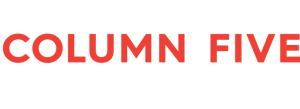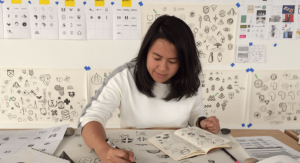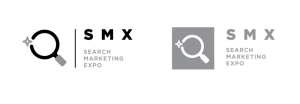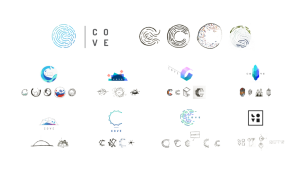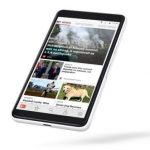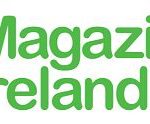By
When most people think of a brand, they think of a logo. A brand is much more than that, but a logo is certainly one of the most prominent pieces of a visual identity. Creating the perfect logo (or redesigning your logo) is also one of the biggest creative challenges—beyond coming up with a brand name. How do you brainstorm? How do you iterate? It’s a delicate mix of instinct, skill, and creativity.
We’ve helped many brands bring their logo to life (or give their logo new life), and each project has us starting from square one—the scariest square. But over time we’ve developed a logo design process that makes it easier, even enjoyable, for everyone involved.
If you need to design a logo, try this step-by-step guide to stretch your creativity, use your team’s collective brainpower, and find something that truly reflects your brand.
But first, let’s discuss the word “logo.”
What Is a Logo?
Most people use the word “logo” to mean the visual stamp of a brand: the symbol, word, or both.
However, there is actually a specific distinction:
Logomark: The simple image that represents a brand (think Nike’s swoosh or Apple’s apple). For Column Five, it’s this:
Logotype/wordmark: A brand name in a styled font (think Coca-Cola’s elaborate script or Gucci’s clean font).
Combination mark: Both the image and the styled brand name together (think Puma).
Now that there are more opportunities for visual branding, from favicons to Facebook cover photos, it’s more common for companies to have all three. For the purposes of this blog, we’ll talk about logomarks and logotypes, with the assumption that you will be designing a combination mark logo. So, on to the process.
How to Design a Logo
Designing a logo relies on team collaboration and communication. The steps outlined here are meant to maximize your creative output while moving through the process in an intuitive way. Depending on your team, you may require more rounds of feedback in between, so feel free to tweak as needed.
1) Fill Out Your Brand Identity Survey
Whether you’re collaborating with an agency or creating a logo in-house, this is the first step in the logo design process. A brand identity survey is an articulation of what your brand is or what you hope it will be. It basically works as the foundation of your creative brief.
This type of survey is there to help designers understand the brand essence. If you haven’t done one before, here are the questions to answer:
- Organization name (The way you want it on the logo and any other derivatives)
- Tagline (if applicable)
- What does your organization do (succinct, objective description)?
- What is your core identity (vision, mission, and values)?
- How is your organization currently perceived? Does that align with the organization’s character/values?
- How does your organization want to be perceived?
- How has your organization changed over time? Where is it now, where is it going?
- Who is your audience?
- Who are your competitors? How does your brand fit into the landscape?
- How does your organization differentiate itself?
- What is your organization’s current “character” or “personality” (e.g., reliable, fun)?
Current Visual Identity
- Objectively describe what your brand is/what it looks like (e.g., logo, color, font)
- Subjectively describe what you think it communicates (e.g., friendliness, strength)
- How does the visual identity align or misalign with the organization’s values?
- What do you like/not about the current visual identity?
- How has the visual identity changed over time?
- Are there different geographical teams or divisions to account for within a variation of the logo?
- How do you feel about your logo?
- Where will this logo be used? (Print, web, social media)
- Why are you creating a new and unique logo? Why now?
- Should your new logo be “evolutionary” or “revolutionary”? (Is it updating the current identity or starting completely new?)
- Why type of “character” or “personality” would you like the new logo to have?
- What type of logo are you more drawn to: logomark, logotype, or combination mark?
Articulating this foundational thinking is crucial to keep your team on the same page throughout the process.
2) Write the Creative Brief
A creative brief is a distillation of your brand survey, translating those answers into actionable design directions. A creative director or project manager is usually the person who creates the brief, but everyone involved with the logo design process should be well versed in the creative brief.
Here’s everything to include in your brief. You should also choose 5-7 words that describe the brand, as these will guide your brainstorm.
3) Host a Free Association Brainstorm
Brainstorms can be the best part of the process, or they can be brutal. To help reduce the chaos, we recommend several brainstorms—each with a specific purpose. (You can also see our tips for conducting a better brainstorm to start off on the right foot.)
For this brainstorm:
- Your goal is: To create word clouds of brand descriptors that are inherently visual. (There’s no sketching at this phase.)
- Your team should include: Your creative director(s), project manager, designers, and anyone else with knowledge of the brand, particularly if you are designing in-house. That can include anyone from your accountant to your receptionist. The more minds the better.
- What you’ll do: Gather your team and a white board. Put 5-7 brand descriptors up on the board (e.g., friendly, helpful, enthusiastic, etc.). Hand out markers, then have the team do a free association exercise to come up with similar words or words inspired by any of your existing descriptors (e.g., friendly = kind, nurturing, generous, etc.). Have people list out as many as they can.
Once this exercise is complete, your creative director or project manager will identify the words that inspire the most visualization. These will be used in the next brainstorm.
4) Have a Free Sketch Brainstorm
If your first brainstorm was fruitful, you should have a curated list of inspiring words for designers to work with. Now it’s time to start sketching a logomark. (You want to focus on your logomark first, then incorporate wordmark later.)
- Your goal is: To translate concepts into visualizations.
- Your team should include: Creative director(s), project manager, and designers.
- What you’ll do: Print out your bullet point list of inspiration words and put them up on a corkboard (or list them on a whiteboard). Roll out a bunch of paper and have your designers start sketching visual ideas inspired by the words (e.g., “helpful” might look like hands shaking, people hugging, or even a tow truck pulling something). Don’t be self conscious. You want as many visual ideas on paper as possible, no matter how ridiculous or off the wall.
At the end of the session, the creative director should identify 25-30 concepts. You should also be able to group these visual concepts into 4-5 categories or themes. As you get feedback, you’ll likely see people gravitate toward a certain type of theme/category (e.g., “motion” or “human interaction”).
5) Turn Sketches Into Vectors
This is where you start to see what type of logo will work in the real world. Have the design team design turn those 25-30 sketches into simple black-and-white vectors.
You want to work in black and white for two very important reasons:
- The logotype/logomark should have a strong design foundation. Basically, it should work without the added dazzle of color.
- Color sways opinion. As you solicit rounds of feedback, color can distract or doom a perfectly great logo just because someone couldn’t see past that obnoxious orange.
Also, keep in mind that logomarks need to be legible in many applications (especially in tiny renderings, such as a favicon).
This simple exercise will likely exclude a few visual concepts, which is good. Your goal is to continue to narrow.
6) Narrow It Down for Feedback
Now here’s the fun but tough part. The more options you give, the more overwhelmed people get. You want to distribute 3-5 truly workable options for feedback to necessary stakeholders. You’re still only working on logomark at this point.
Distribute these options, gather collective feedback, then iterate for your next round.
7) Present Your Frontrunners
After you edit and iterate, you should be able to identify your top 3 logomarks. Only then do you start to explore wordmark options (we say start with 10, which can be mixed and matched with all three logomarks). You can also incorporate color for both.
8) Test, Test, Test
With your top 3 frontrunners, it’s time to get even more feedback (yes, it can feel relentless) and test mockups: think packaging, landing pages, ads, etc. If you want an easy way to test, you can adapt Steven Cook’s smart idea (originally for testing a brand name):
- Build a branded landing page for each logo. Use identical copy and only change logo.
- Run a highly targeted FB ad to your target customers for a week.
- See which page got more conversions.
Don’t Get Discouraged If You’re Back to the Drawing Board
No one said designing a logo is easy, and there are times when the process can feel overwhelming. If you find yourself heading back to the drawing board one more time, there are a few things that can help you:
- Get inspired by the awesome examples of logo design in our roundup of branding tools.
- Try these tips to get creatively unstuck.
- Learn how to work with the 4 types of creative thinkers if you feel like your team is having communication issues.



